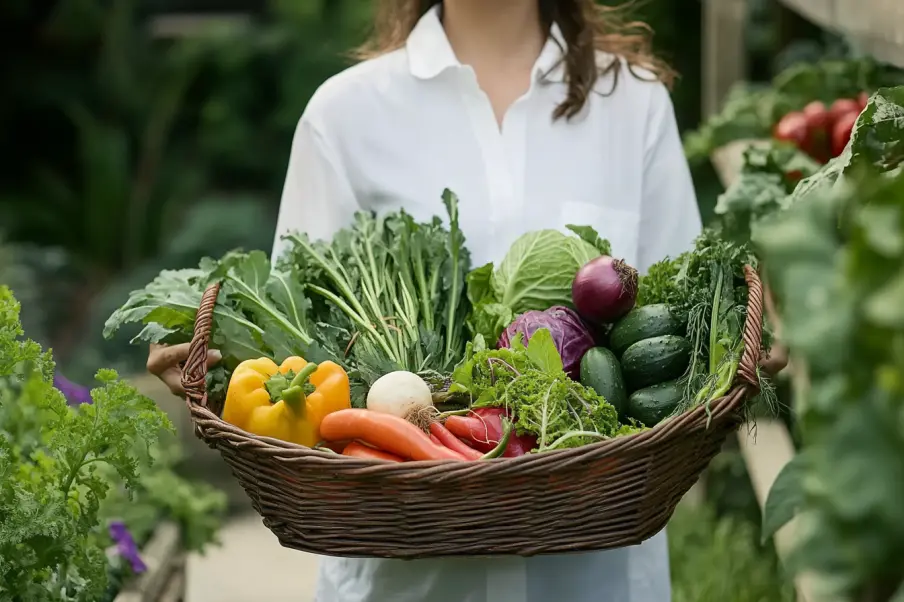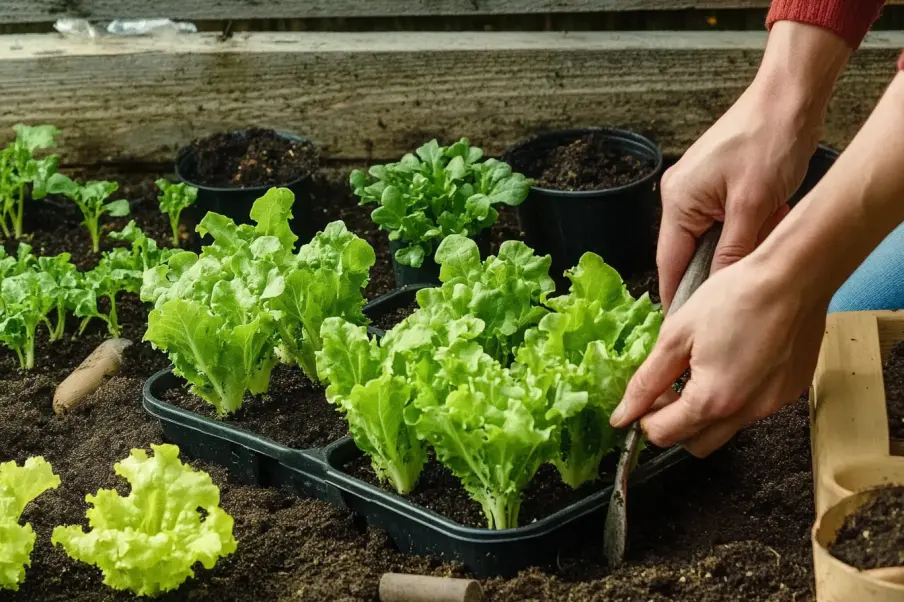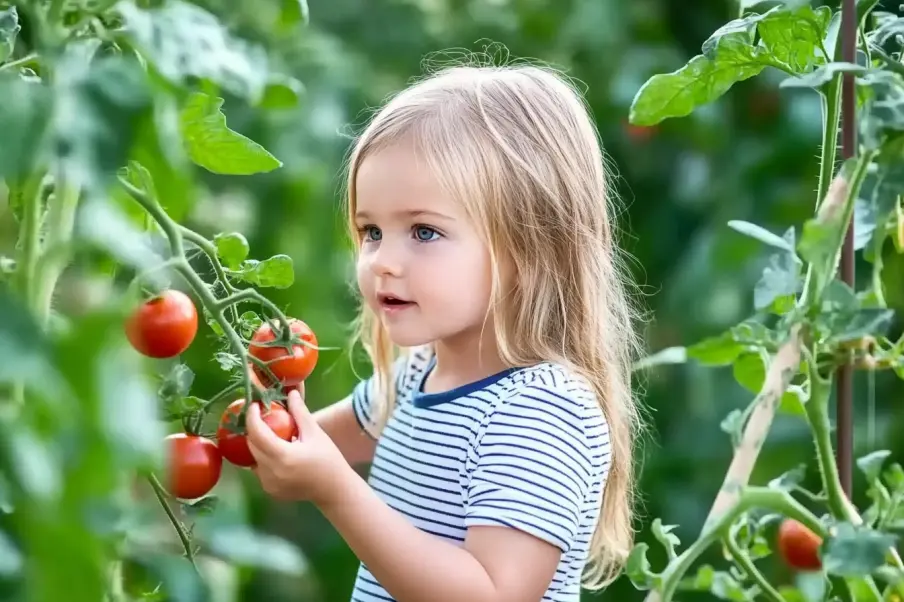Why Start a Vegetable Garden?
Benefits of Growing Your Own Vegetables
Vegetable Gardening for Beginners is a rewarding journey that offers fresh, healthy produce right from your backyard. Homegrown vegetables are free from harmful pesticides, taste better, and provide superior nutrition. Plus, gardening promotes physical activity and mental well-being, making it a fulfilling hobby for all skill levels.
Cost Savings and Sustainability
Growing your own vegetables can significantly reduce grocery expenses. By planting staple crops like tomatoes, lettuce, and peppers, you can enjoy fresh produce throughout the season while cutting down on food costs. Moreover, vegetable gardening is an environmentally friendly practice that reduces packaging waste and carbon footprint. If space is limited, consider growing vegetables in containers. Learn more about 12 Vegetables You Should Be Growing in Buckets to maximize your yield in small spaces.

Best Vegetables for Beginners
If you’re new to gardening, start with easy-to-grow vegetables that require minimal maintenance. Some beginner-friendly choices include:
- Lettuce
- Spinach
- Radishes
- Carrots
- Tomatoes
- Peppers These vegetables grow well in most climates and provide a rewarding harvest with little effort.
How to Plan Your Vegetable Garden
Choosing the Right Location
The success of your garden depends on selecting an optimal location. Consider the following factors:
Sunlight Requirements
Most vegetables require at least 6-8 hours of direct sunlight per day. Leafy greens like spinach and lettuce can tolerate partial shade, while fruiting plants like tomatoes and peppers need full sun.
Soil Conditions & Preparation
Healthy soil is essential for plant growth. Conduct a soil test to determine pH levels and nutrient content. Improve soil quality by adding compost, organic matter, and natural fertilizers to enhance fertility and structure.
Drainage & Watering Needs
Proper drainage ensures that plant roots do not become waterlogged. Raised beds and well-amended soil improve water absorption and aeration. Drip irrigation systems or soaker hoses help maintain consistent moisture levels without overwatering.
Deciding on Garden Size & Layout
Before planting, determine the size and layout of your garden. Consider available space, accessibility, and maintenance needs.
Raised Beds vs. In-Ground Gardens
Raised beds provide better soil control, reduce weeds, and improve drainage. They are ideal for beginners who want a manageable and organized growing space. In-ground gardens are more traditional but may require more soil preparation and weeding.
Vertical Gardening for Small Spaces
If you have limited space, vertical gardening techniques such as trellises, wall planters, and hanging baskets allow you to grow more food efficiently.
Companion Planting Strategies
Companion planting enhances plant health and productivity. For example:
- Basil improves the flavor of tomatoes and repels pests.
- Carrots and onions deter each other’s common pests.
- Beans enrich the soil with nitrogen, benefiting leafy greens.

Best Vegetables to Plant in Spring
Cool-Season Vegetables to Direct Seed
These crops thrive in cooler temperatures and can be planted directly into the soil:
- Lettuce – Fast-growing and perfect for salads.
- Spinach – Nutrient-rich and easy to grow.
- Carrots – Require loose soil for proper root development.
- Radishes – Quick to mature and great for beginners.
- Peas – Thrive in cool weather and add nitrogen to the soil.
For additional information on seasonal planting, check out this guide on Vegetables to Plant in Spring.
Warm-Season Vegetables to Transplant
Once the risk of frost has passed, transplant warm-season crops:
- Tomatoes – A garden favorite that produces abundantly.
- Peppers – Available in sweet and hot varieties.
- Cucumbers – Require trellising for optimal growth.
- Zucchini – High-yielding and easy to grow.
- Eggplant – Prefers warm temperatures and rich soil.
When & How to Start Planting
Understanding Frost Dates
Knowing your local last frost date helps determine when to plant. Check online resources or consult local extension offices for accurate frost dates.
Indoor Seed Starting vs. Direct Sowing
Some vegetables, like tomatoes and peppers, benefit from indoor seed starting 6-8 weeks before the last frost. Others, like carrots and radishes, grow best when directly sown into the garden.
Transplanting Seedlings for Best Results
Harden off seedlings by gradually exposing them to outdoor conditions before transplanting. This reduces transplant shock and promotes healthier plants.
Essential Gardening Tips for Beginners
Watering & Irrigation Best Practices
Water deeply but less frequently to encourage strong root growth. Early morning watering reduces evaporation and prevents fungal diseases.
Organic Pest Control Methods
Use natural pest control solutions such as:
- Companion planting
- Neem oil sprays
- Beneficial insects like ladybugs and praying mantises
Companion Planting & Crop Rotation
Rotate crops each season to prevent soil depletion and pest buildup. Avoid planting the same vegetable family in the same spot year after year.
Fertilizing & Mulching for Healthy Growth
Apply organic fertilizers like compost, worm castings, or aged manure. Mulch with straw or wood chips to retain moisture and suppress weeds.
Common Gardening Mistakes to Avoid
- Overwatering or underwatering
- Ignoring soil health
- Planting too close together
- Not considering pest control strategies
Harvesting & Storing Your Vegetables
When to Harvest for Peak Flavor
Each vegetable has its ideal harvest time:
- Lettuce: When leaves are tender and full
- Carrots: When tops are about 1 inch in diameter
- Tomatoes: When fully colored and slightly firm
Proper Storage Techniques
Store root vegetables in a cool, dark place. Leafy greens should be refrigerated in breathable bags.
Freezing, Canning, and Preserving
Extend your harvest by freezing, drying, or canning surplus vegetables. Blanching before freezing helps retain flavor and nutrients.
Additional Resources & Next Steps
Best Places to Buy Quality Seeds
Look for reputable seed suppliers that offer organic and heirloom varieties.
Advanced Tips for Year-Round Gardening
Consider greenhouse gardening or cold frames to extend your growing season. Succession planting ensures a continuous harvest.
Related Articles for Further Learning
Learn more about maximizing small spaces by growing vegetables in containers with 12 Vegetables You Should Be Growing in Buckets.

